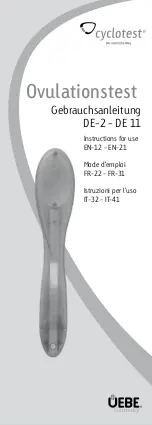
8
A clinical study was conducted at multiple locations in the United States. All participants in the study were females, diagnosed with
Androgenetic Alopecia, which includes hereditary hair loss, who had light to medium skin tones. Subjects were divided into two
groups. One group used the HairMax and the other group used a control device. The control device looked and sounded like the
HairMax, but did not include a laser light. The Clinical studies adhered to all GCP (Good Clinical Practice) guidelines, were approved
by an IRB (Institutional Review Board) and listed on www.clinicaltrials.gov.
During the 6 month study, subjects treated their hair once per day, 3 times per
week, on nonconsecutive days. The number of thick, normal, healthy hairs in the
target area were counted at Week 1, Week 16 and Week 26.
Results at 26 weeks showed that over 90% of the women saw increases in hair
counts.*
No subjects in the study experienced any serious adverse events. In fact, the
number and types of adverse events were similar in the HairMax and control groups.
Hair Count Change
In the clinical study, after 26 weeks of treatment with the HairMax and a control
device, the following increases in hair count were found.
*Based on a minimum of 5 new hairs per square centimeter/32 new hairs per square inch being observed at the follow up visit
SUMMAR
Y OF CLINICAL STUDY IN WOMEN
SUMMARY OF CLINICAL STUDY IN WOMEN
20.5
Hairs/cm2
132.2
Hairs/in2
2.7
Hairs/cm2
17.4
Hairs/in2
21.6
Hairs/cm2
139.3
Hairs/in2
4.3
Hairs/cm2
27.7
Hairs/in2
21.6
Hairs/cm2
139.3
Hairs/in2
4.3
Hairs/cm2
27.7
Hairs/in2











































